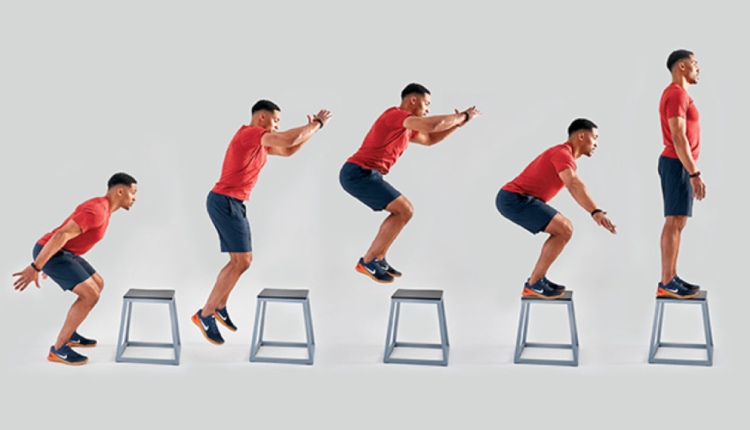Squats are among the best exercises one can learn and master. A fundamental exercise that provides numerous advantages is the squat pattern. Both daily life and sports can benefit from these advantages. You can thrive while carrying out everyday tasks if you maintain your ability to squat throughout your life. So if a person is a fitness freak, they should obviously be familiar with multiple squat variations. So, let’s take a look at the different types of squats that you should try to incorporate into your workout routines starting now.
Types of Squats to Include in your workout routine:
Rear Foot Elevated Split Squat
The use of just one leg during exercise is explored in this squat. Fitness enthusiasts and athletes who are restricted from using heavy weights due to injuries or other reasons will particularly benefit from this.
How to do it:
Place one foot on a box or chair to raise your back foot. Place your front foot forward (in a lunge position) while holding a weight to relieve pressure on your spine. The front leg should be placed so that it forms a 90-degree angle with the surface and your hips. Then you squat down and move forward while maintaining a straight back using your muscle strength. When you are bending down, the height of the chair or box with the back foot elevation should be equal to that of your hips. With your trainer’s help, try to complete 10 repetitions with each leg.
You may also like: Simple Exercises for fingers to be recharged
Eccentric Front Squat
Exercises like eccentric front squats, which help your quads gain more power, are the best if you only have time to work on your quads. Your quads lengthen during the eccentric portion of the exercise. Such squats are suitable for runners.
How to do it:
Put a barbell on your front shoulders, then hold or support the barbell with your hands aligned to the floor. Once you have a firm grip on the barbells, take a couple of steps back while keeping your balance. Now carefully extend your legs or foot to a shoulder-hip width. This will put you in the squat position. Once in position, slowly try to squat down while keeping your back straight. The force of the squat should be felt throughout your body. Slowly go down while focusing on your quads. After completing a set, you should be able to push off your heels to return to the starting position. Repeat once more. Depending on your flexibility and your training needs, you can perform up to 10 repetitions or more.
Jump Squat with a Box

This exercise is similar to a simple jump squat but uses aids like exercise boxes. Squat exercises are identical to squatting up and down on the pavement when used for explosive workouts. Squats of this kind enable muscle elasticity and are advantageous for physical fitness.
How to do it:
Put your feet shoulder-hip distance apart when standing. Spreading your body weight out, try to get into a neutral squat position. Put your hands or arms behind your back while maintaining an open, straight posture while you find your balance. Squat down and jump onto the first box with your hands swinging above your head. Return to the first box in a squat position and continue. At the conclusion of the exercise, come to a squat position. Take a step back from the boxes and take a 5-second breather. Do the set a second time. For each set, you can perform up to 10 counts.
Goblet Squat
Are you interested in developing and enhancing your core muscles? In that case, the goblet squat is the recommended exercise. Goblet squats are a great exercise that is suggested by fitness professionals and by professional training for athletes. It can be simple to do and harmless to perform with weights.
How to do it:
Take a dumbbell or a kettlebell in front of you, pressing it closer to your chest with your palms. While assuming a squat position, you should hold the dumbbell nearer to your chest. Try to keep your hips and back from tilting as you prepare to squat and bend your knees. Maintain a neutral stance. You must lower your body while simultaneously extending your hips back during this exercise. By maintaining weight, you can maintain a natural balance in your physique so that you don’t bend your knees and your hips too far. The objective is to descend with a firm back while maintaining neutral hips.
We will be delighted to have your thoughts and feedback. Please write to us at [email protected]
Follow Life and Trendz on Instagram:https://www.instagram.com/lifeandtrendz/
Facebook: https://www.facebook.com/lifeandtrendz
Twitter: https://twitter.com/LifeandTrendz


Comments are closed.